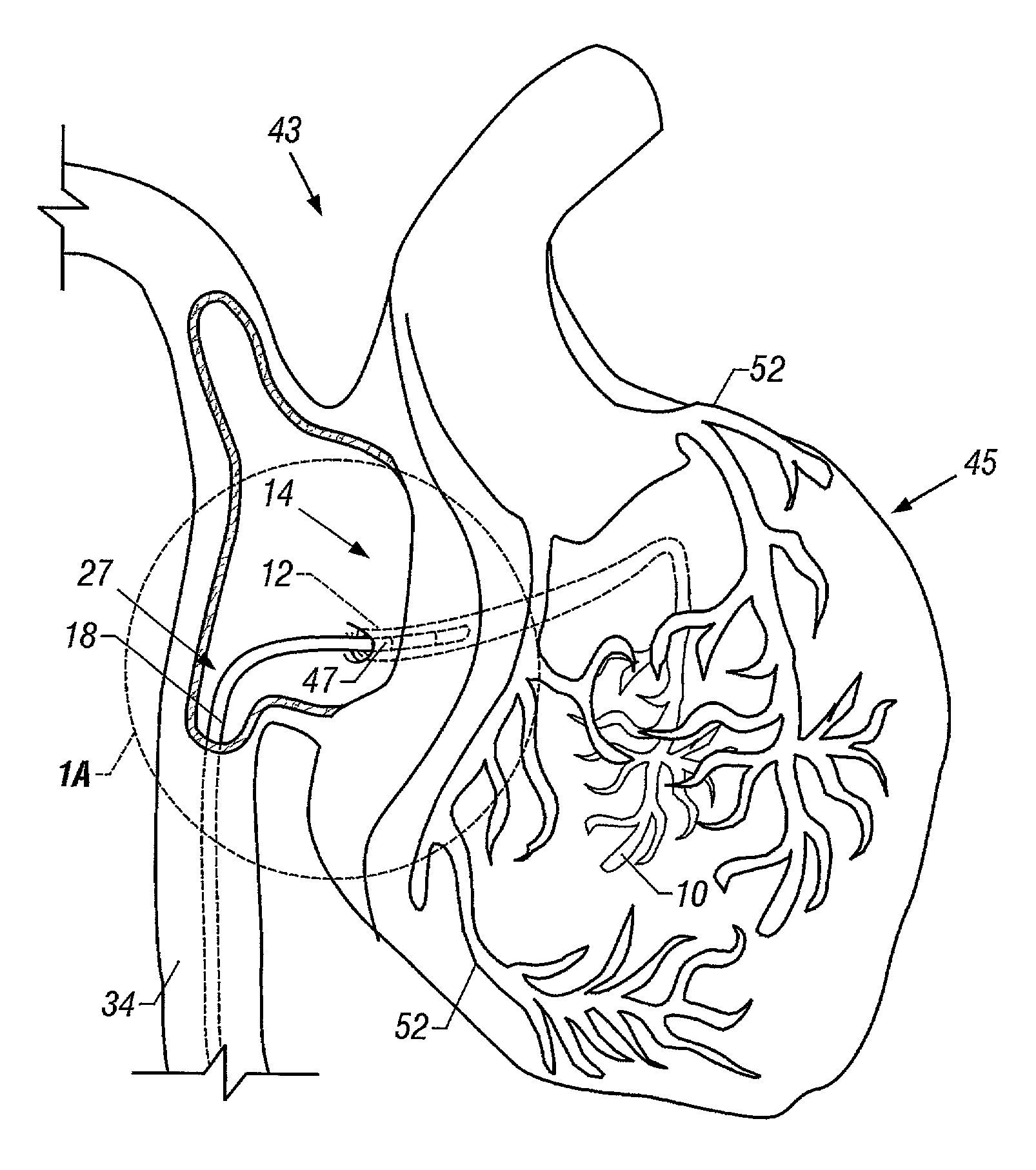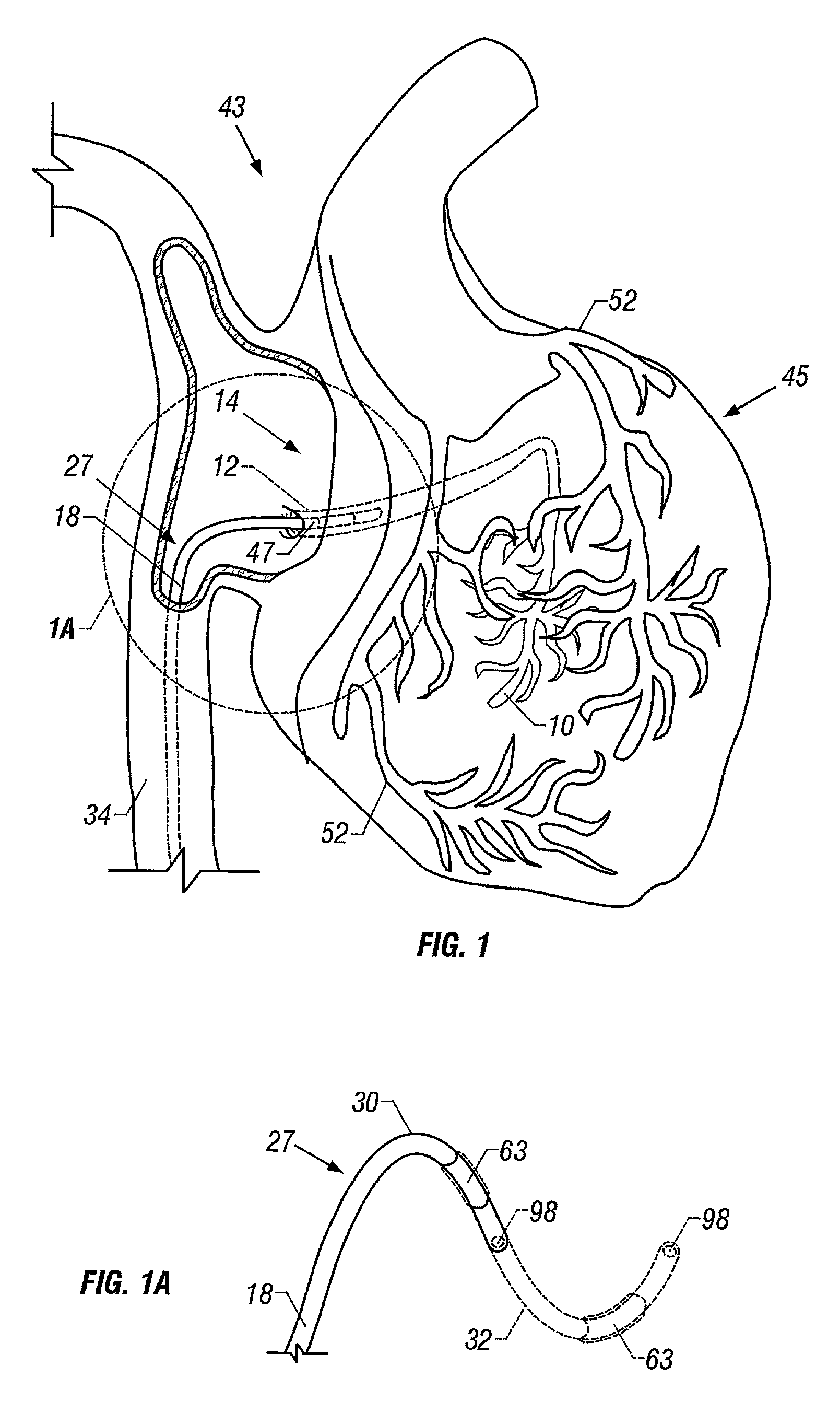Method and apparatus to remove substances from vessels of the heart and other parts of the body to minimize or avoid renal or other harm or dysfunction
a technology of heart and other parts, applied in the field of methods and apparatus to remove substances from the vessels of the heart and other parts of the body, can solve the problems of randolph lack of occlusion, lack of disclosure of contrast injection by a second catheter upstream of the occlusion, and device of niazi lack of a second catheter inserted upstream of the veins
- Summary
- Abstract
- Description
- Claims
- Application Information
AI Technical Summary
Benefits of technology
Problems solved by technology
Method used
Image
Examples
Embodiment Construction
[0037]Coronary veins 10 drain into the coronary sinus 12 as a final way of flow into the right atrium 14. Anatomically, it is possible to remove most of the contrast 16 from the coronary sinus 12 during coronary intervention by using a first catheter 18 that can occlude the coronary sinus vein 12 and remove blood 21 distal to the occlusion 23.
[0038]A balloon tipped catheter has been used safely for cardioplegia during cardiac surgery. However, a catheter having occlusion means as proposed by the present invention has never been used prior to the instant invention. One known manufacturer of balloon tipped catheters is Heartport Inc. of Redwood City, Calif. The balloon tipped catheter by Heartport is manufactured for other applications. While the preferred means for occluding is a balloon tip 47, other means for occluding are possible, and the catheter of the instant invention has other features that go beyond what is disclosed in the prior art.
[0039]The apparatus of the instant inven...
PUM
 Login to View More
Login to View More Abstract
Description
Claims
Application Information
 Login to View More
Login to View More - R&D
- Intellectual Property
- Life Sciences
- Materials
- Tech Scout
- Unparalleled Data Quality
- Higher Quality Content
- 60% Fewer Hallucinations
Browse by: Latest US Patents, China's latest patents, Technical Efficacy Thesaurus, Application Domain, Technology Topic, Popular Technical Reports.
© 2025 PatSnap. All rights reserved.Legal|Privacy policy|Modern Slavery Act Transparency Statement|Sitemap|About US| Contact US: help@patsnap.com



